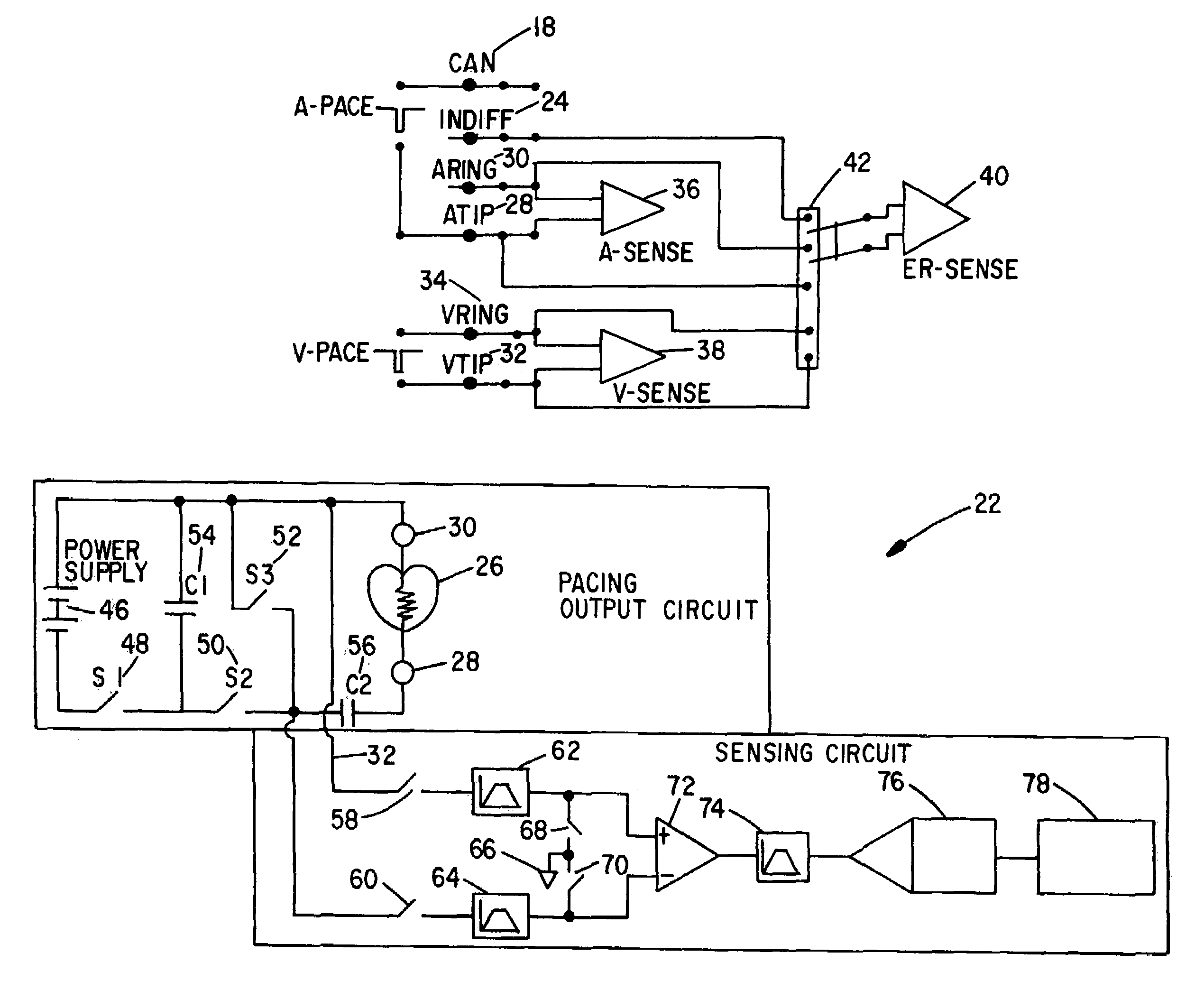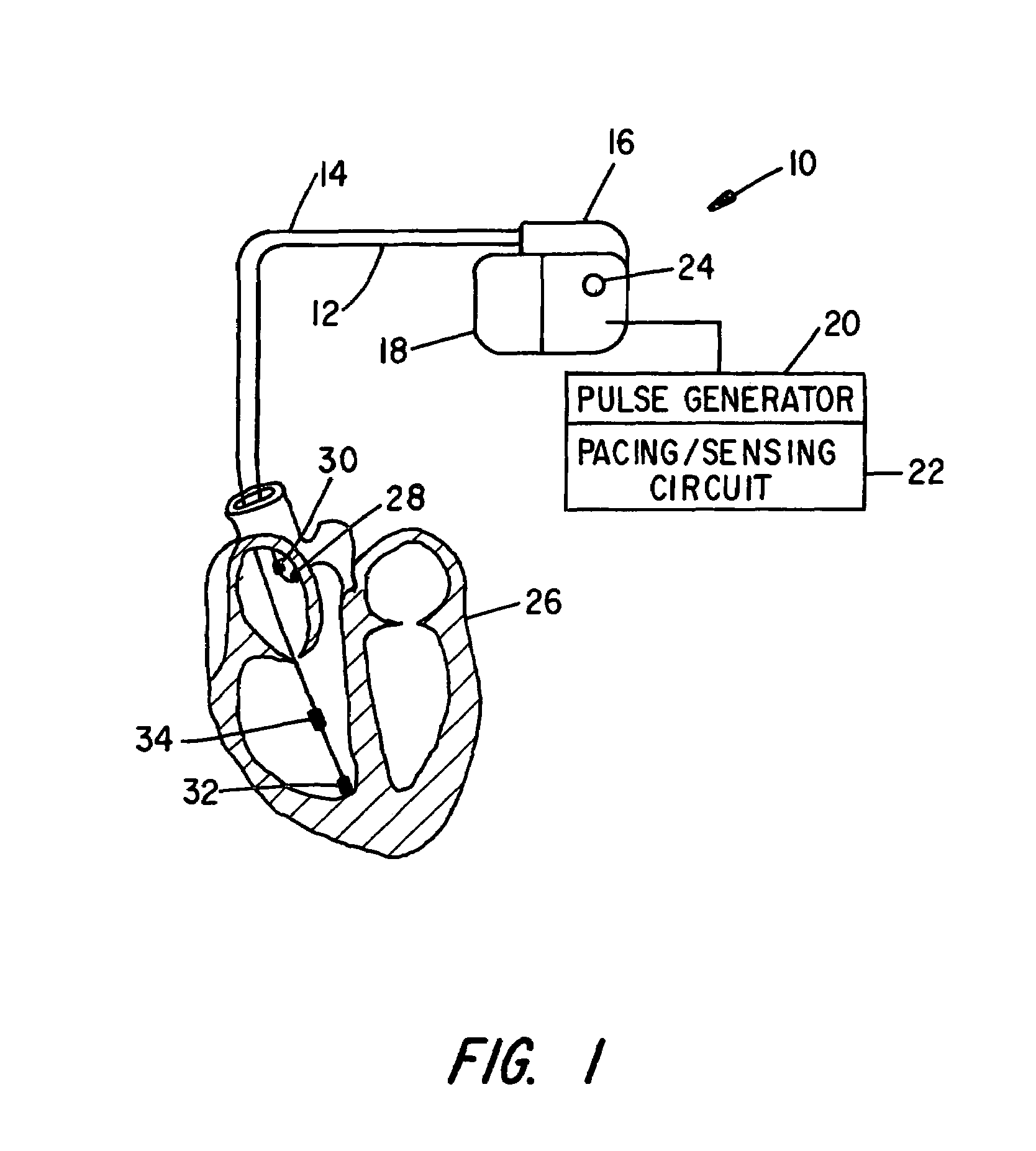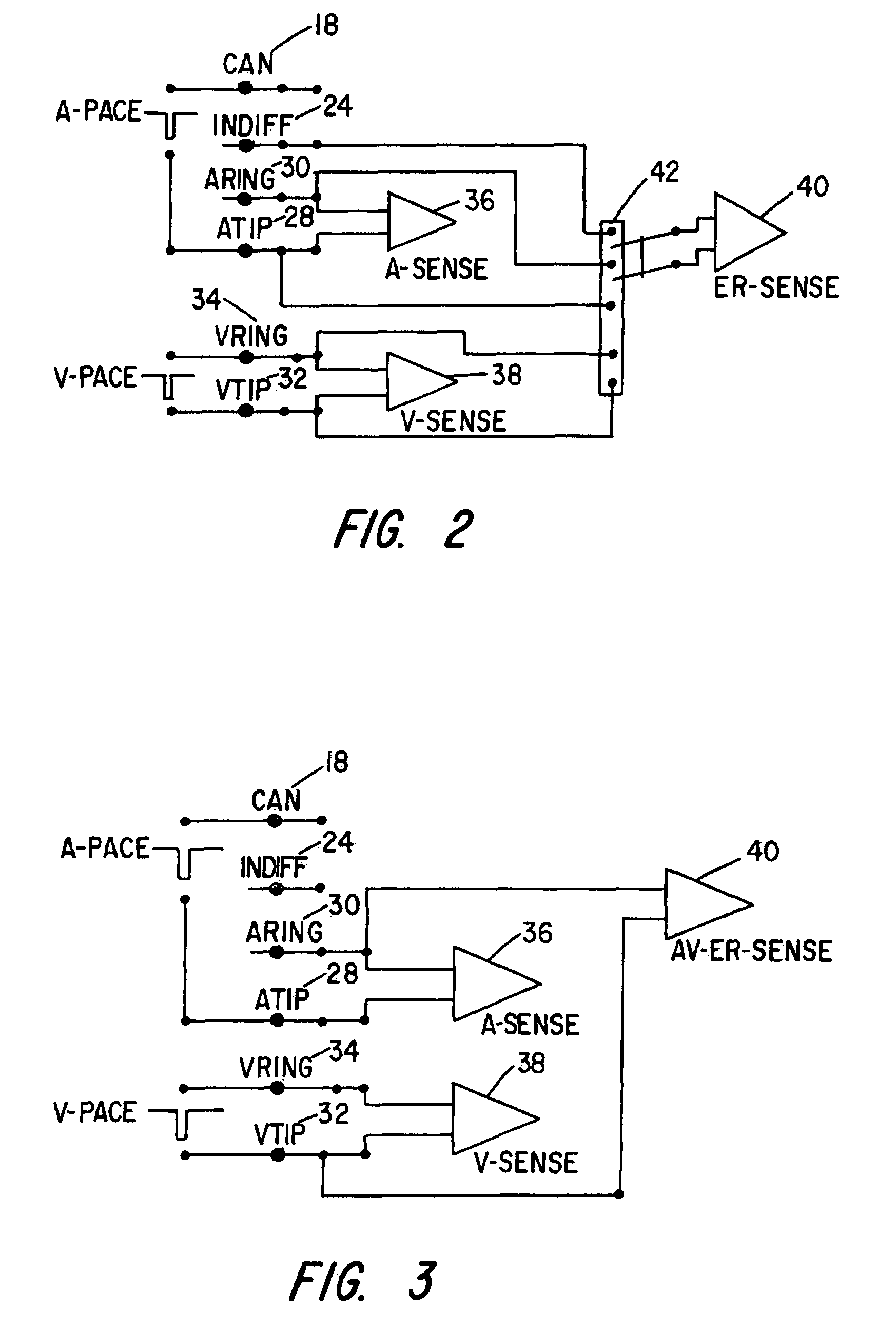Autocapture pacing/sensing configuration
- Summary
- Abstract
- Description
- Claims
- Application Information
AI Technical Summary
Benefits of technology
Problems solved by technology
Method used
Image
Examples
Embodiment Construction
[0041]Referring first to FIG. 1, the cardiac pacing system of the present invention is shown generally and includes a cardiac pacer 10, atrial lead 12 and ventricular lead 14. The cardiac pacer 10 includes a header 16 and can 18, wherein a pulse generator 20 including pacing and sensing circuits 22 are contained therein. An indifferent electrode 24 of suitable known construction is positioned on the can 18 such that the indifferent electrode 24 is electrically isolated from the can 18 and is electrically coupled to the sensing circuit 22. Atrial lead 12 and ventricular lead 14 are engaged to header 16 and may be electrically coupled to the pulse generator 20 and pacing and sensing circuits 22 in a known suitable fashion. The atrial lead 12 is positioned in the atrium of the heart 26, wherein the atrial lead 12 includes a tip electrode 28 and ring electrode 30. The ventricular lead 14 is positioned within the ventricle of the heart 26, wherein the ventricular lead 14 includes a tip e...
PUM
 Login to View More
Login to View More Abstract
Description
Claims
Application Information
 Login to View More
Login to View More - R&D
- Intellectual Property
- Life Sciences
- Materials
- Tech Scout
- Unparalleled Data Quality
- Higher Quality Content
- 60% Fewer Hallucinations
Browse by: Latest US Patents, China's latest patents, Technical Efficacy Thesaurus, Application Domain, Technology Topic, Popular Technical Reports.
© 2025 PatSnap. All rights reserved.Legal|Privacy policy|Modern Slavery Act Transparency Statement|Sitemap|About US| Contact US: help@patsnap.com



